Contents
-
Pet-safe ground covers protect your furry friends from harmful chemicals and ensure they have a safe place to play.
-
Natural ground covers like clover, native grasses, and thyme are not only safe for pets but also beneficial for the environment.
-
Artificial turf can be a durable, low-maintenance option for high-traffic pet areas.
-
Proper maintenance of pet ground covers is crucial to prevent odors and ensure longevity.
-
Choosing the right ground cover involves considering pet behavior, yard size, and local climate conditions.
Discovering Pet-Safe Ground Covers

When it comes to creating a pet-friendly outdoor space, the ground cover you choose is just as important as the fence that keeps your furry friend safely inside. The right ground cover will be soft on paws, free from toxins, and able to withstand the rough and tumble play of your four-legged companions.
Why Go Pet-Safe?
It’s simple: our pets are family. We want them to enjoy the outdoors without exposing them to potential dangers. Traditional lawn care often involves fertilizers and pesticides that can be harmful to pets. By choosing pet-safe ground covers, we eliminate these risks and create a healthier environment for everyone.
Besides that, pet-safe ground covers can save you time and money. They’re designed to be low-maintenance and durable, meaning less time spent on upkeep and more time playing fetch!
Ground Cover and Pet Happiness
A happy pet is a pet with a safe place to explore. Ground covers that are gentle on paws and free from sharp objects or toxic plants contribute to your pet’s overall well-being. Plus, they can also help keep your pet clean—less dirt and mud means less mess in the house.
Natural Pet-Safe Ground Covers
Let’s dig into the options nature provides. Natural ground covers are not only safe for your pets, but they can also be eco-friendly and visually appealing. They come with the added benefit of integrating seamlessly into your garden’s ecosystem.
Soft Landscaping for Furry Paws
Soft landscaping refers to the use of plants and organic materials to create a garden bed or lawn. It’s a perfect match for pet owners because it includes using ground covers that are gentle on the paws and non-toxic if ingested.
Plant Choices That Make The Cut
When it comes to natural ground covers that are safe for pets, not all plants are created equal. Some are more durable, some require less maintenance, and others offer the added bonus of being medicinal or repelling pests. Here are a few top picks:
Clover
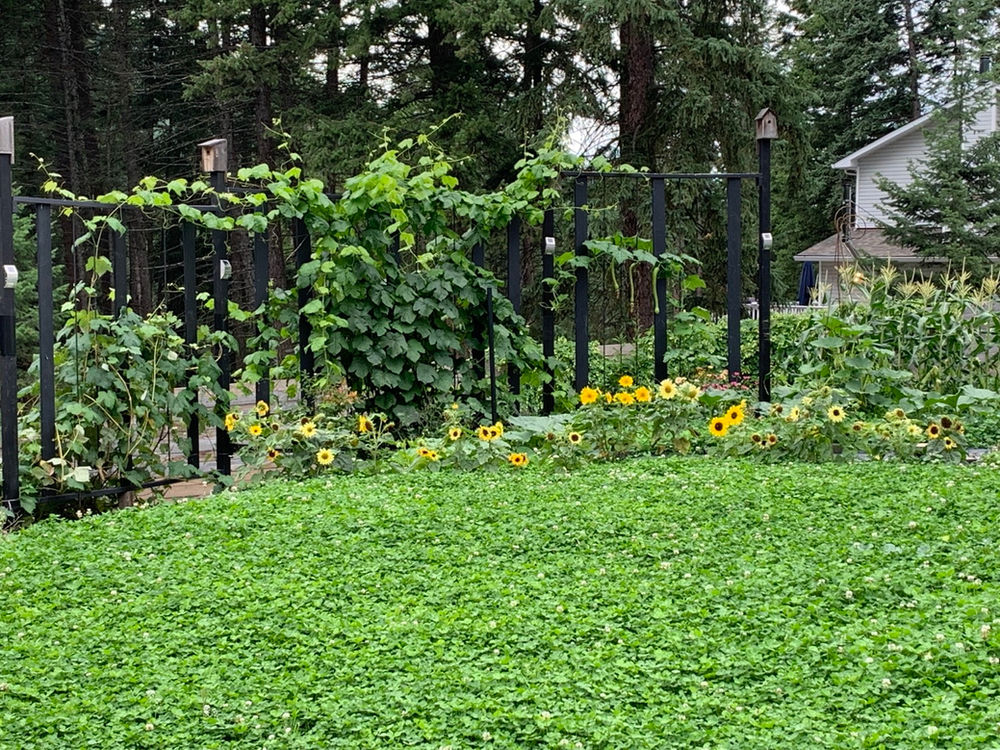
Image from – https://www.danakayal.com/post/clover-lawn
Clover is a great choice for a pet-safe lawn. It’s resilient, doesn’t require much fertilizer, and is naturally resistant to pet urine. Plus, it’s soft to walk on and offers a lush, green appearance all year round.
Native Grasses
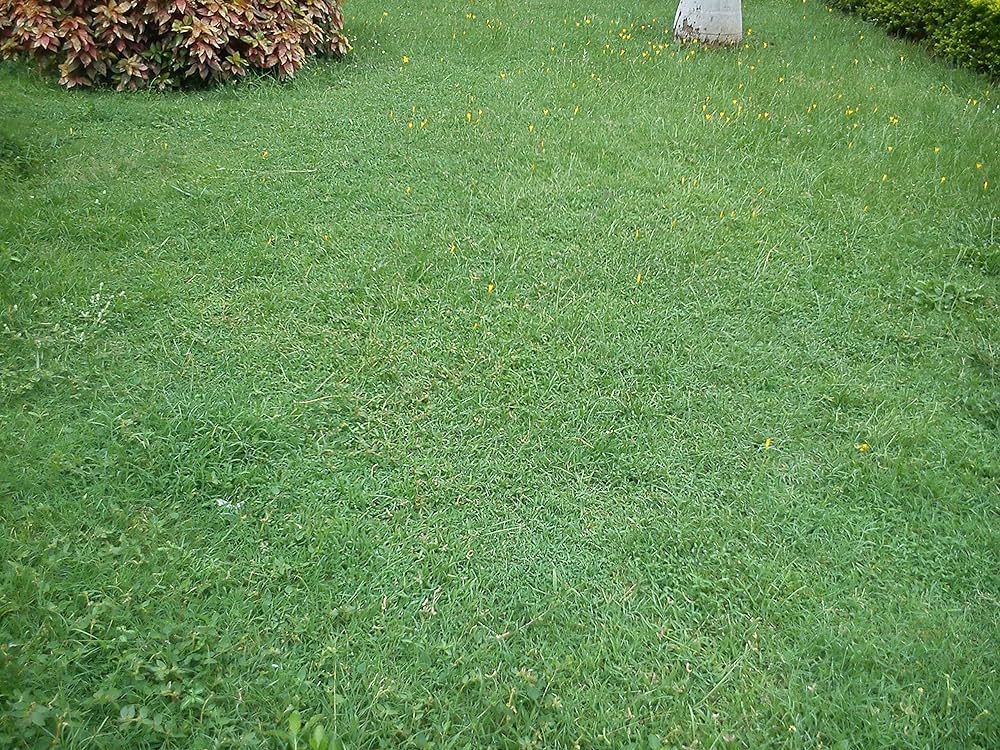
Native grasses are a wise choice because they are adapted to your local climate, making them hardier and less maintenance-intensive. They provide a natural look and feel that pets love and are often deep-rooted, which helps prevent erosion.
-
Buffalo grass
-
Bermuda grass
-
Zoysia grass
These grasses not only stand up to wear and tear but also require less water, which is good for the environment and your water bill.
Thyme
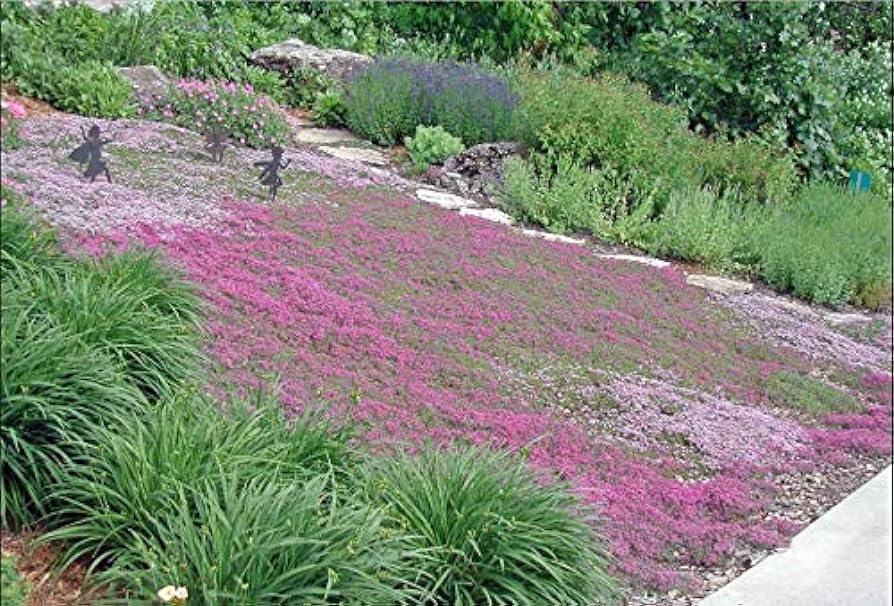
Thyme is a hardy, low-growing plant that can stand up to foot traffic. It’s safe for pets and offers a pleasant scent. Plus, it flowers, providing a pop of color and attracting beneficial insects to your garden.
Creeping thyme and woolly thyme are two varieties that are particularly well-suited for use as ground covers. They spread easily and require minimal care, making them a practical choice for busy pet owners.
Synthetic Options for High-Durability
Picking Artificial Turf That Loves Paws
When natural grass isn’t an option, whether due to climate or maintenance considerations, artificial turf can be a fantastic pet-safe alternative. The key is to choose a turf that’s designed with pets in mind. This means looking for options that are durable, easy to clean, and gentle on your pet’s paws.
Types of Eco-Friendly Artificial Grass
Artificial grass has come a long way in terms of being eco-friendly. There are now varieties that are made from recycled materials and are themselves recyclable. This is a win-win, as it reduces landfill waste and provides a safe play area for your pets.
1. Biobased Artificial Grass

Biobased artificial grass is a newer entry in the turf market, setting itself apart by using materials derived from renewable resources. This type of grass typically utilizes plant-based materials like soybean oil or sugarcane to replace a portion of the petroleum products traditionally used in synthetic grass.
Factors to Consider When Choosing Biobased Turf
When selecting biobased turf, it’s important to look at:
-
The percentage of biobased content — the higher, the better for the environment.
-
The durability and resilience of the turf, especially if your pets love to run and play.
-
How the turf feels underpaw — you want your pets to be comfortable.
Remember, while biobased artificial grass is a step in the right direction, it’s essential to understand the entire lifecycle of the product, from production to disposal, to ensure it’s a truly eco-friendly choice for your home.
2. Recycled Synthetic Grass
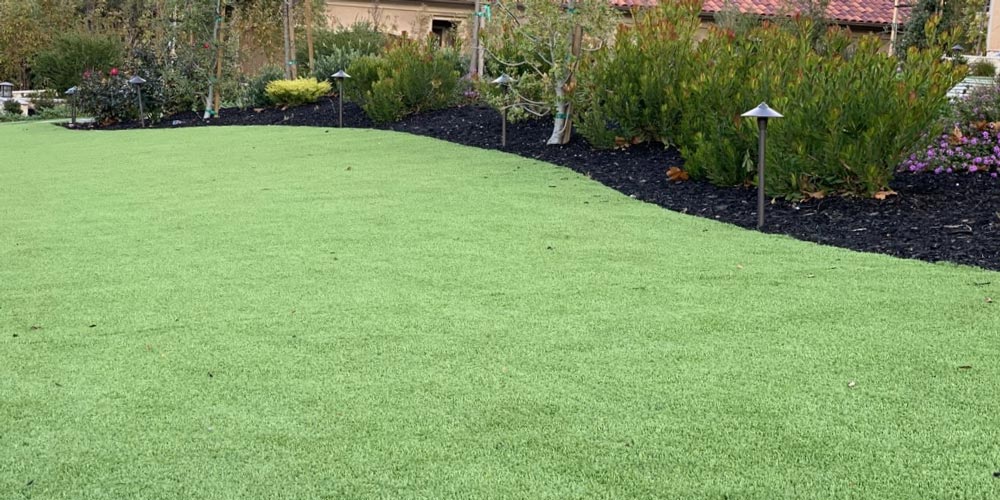
Another sustainable option is recycled synthetic grass. This type of turf is made by repurposing existing plastic materials, such as recycled plastic bottles or old synthetic grass that has been removed from sports fields and other installations.
Benefits of Using Recycled Materials in Turf Production
Choosing recycled synthetic grass has several environmental benefits:
-
It reduces the amount of plastic waste that ends up in landfills or the ocean.
-
Recycling plastics uses less energy than producing new plastics from scratch.
-
It helps to create a market for recycled materials, encouraging further recycling efforts.
Most importantly, by opting for recycled synthetic grass, you’re not just providing a pet-friendly space — you’re also contributing to a circular economy where materials are reused and repurposed, extending their lifecycle and minimizing waste.
3. Permeable Artificial Grass Systems
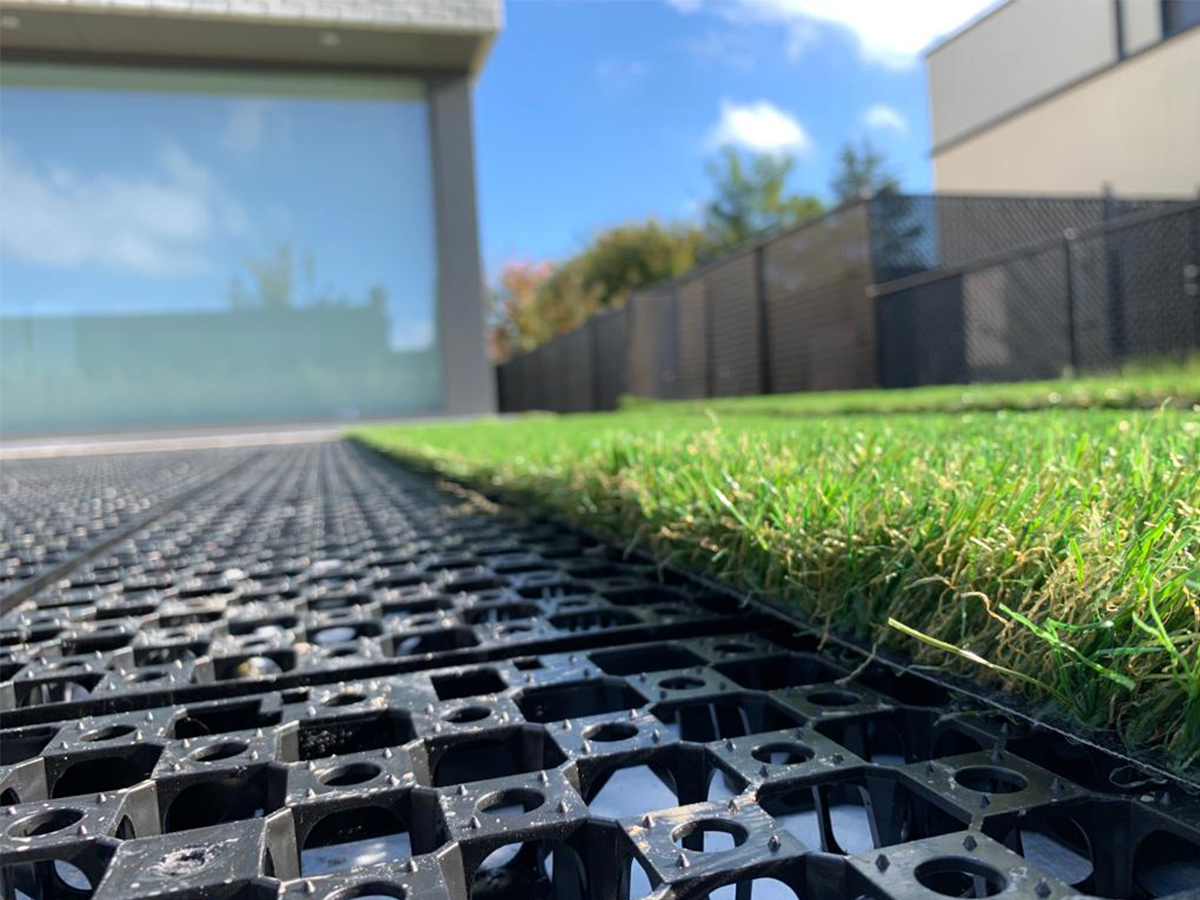
Permeable artificial grass systems are a game-changer in eco-friendly pet turf. Unlike traditional artificial grass, which often has a solid backing that prevents water from passing through, permeable systems are designed to allow water to drain away quickly and efficiently.
How Permeability Enhances Environmental Benefits
The benefits of permeable artificial grass systems are numerous:
-
They reduce runoff, which can carry pollutants into waterways.
-
They help to recharge local groundwater supplies by allowing rainwater to soak into the soil.
-
By promoting better drainage, they prevent standing water, which can be a breeding ground for mosquitoes.
These systems are particularly beneficial in urban areas where impermeable surfaces are common. By installing permeable pet turf, you’re effectively creating a ‘green space’ that can help mitigate the heat island effect and contribute to urban sustainability.
When choosing permeable artificial grass, it’s important to consider the installation process. The base layer should be constructed to promote optimal drainage, typically using materials like crushed stone that allow water to filter through.
Additionally, the infill material used in permeable systems is crucial. Options like sand or organic materials can further enhance drainage and provide a natural feel underfoot for your pets.
Child and Pet-Friendly Eco Playgrounds
For those of us with both children and pets, creating a space that’s safe for both can be a bit of a juggling act. Thankfully, there are ground cover options that cater to the needs of our little ones, both furry and not-so-furry.
Investing in Safe Play Surfaces
When we talk about play surfaces, we’re looking for materials that cushion falls and prevent injuries. Options like play mats and rubber mulch are not only soft and shock-absorbent but also non-toxic, making them ideal for areas where children and pets play.
Integrating Fun and Safety for All
It’s essential to choose play surfaces that are free from small, ingestible parts that could pose a choking hazard. Furthermore, they should be resistant to the elements and to the enthusiastic play that’s bound to happen with kids and pets around.
Play Mats
Play mats are a popular choice for indoor and outdoor play areas. They’re soft, often made from foam or rubber, and come in various colors and designs. They’re easy to install and clean, making them an excellent choice for busy families.
Rubber Mulch
Rubber mulch is another excellent option for playgrounds. It’s made from recycled tires, which means it’s keeping waste out of landfills. It’s also long-lasting and comes in various colors to match your landscape design. Most importantly, it’s soft enough to cushion falls and is a safer alternative to traditional wood chips, which can splinter and harm pets and kids alike.
Example: A community park recently replaced its playground surface with rubber mulch. Not only has it reduced injuries from falls, but local pet owners have also noticed that their dogs prefer walking on the soft surface compared to the old wood chips.
Keeping Your Pet in Mind
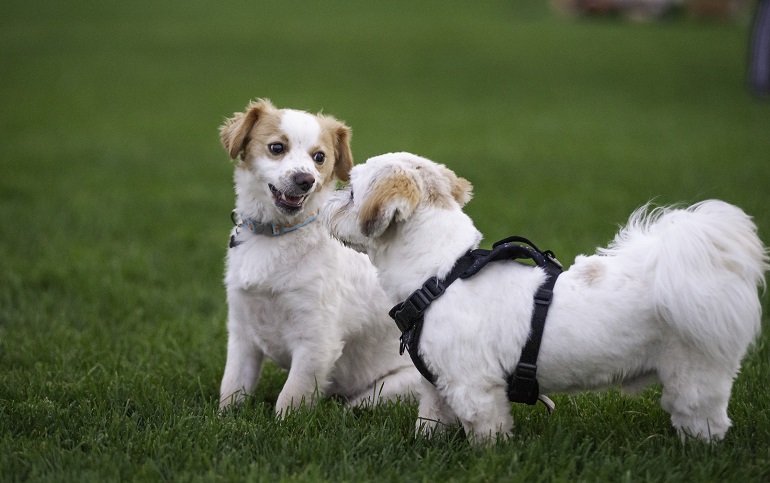
“A Guide To A …” from worldanimalfoundation.org and used with no modifications.
When designing your outdoor space, always keep your pet’s behavior and needs at the forefront. For instance, some dogs love to dig, while others may have a tendency to chew. Selecting the right ground cover can help mitigate these behaviors while keeping your pet safe.
Nontoxic Materials for Your Peace of Mind
Ensuring the materials you choose are non-toxic is crucial. This means avoiding ground covers that may contain lead or other harmful chemicals. Always check with manufacturers about the safety of their products for pets.
Understanding Drainage Needs for Pets
Good drainage is essential, especially for pets who may use the area as a bathroom. Proper drainage ensures that the area remains hygienic and odor-free. When selecting artificial turf, for example, look for options with built-in drainage systems.
Essential Maintenance for Pet Ground Covers
Like anything in your home or yard, pet ground covers require maintenance to stay in top condition. It’s not just about aesthetics; regular upkeep ensures the safety and comfort of your pets, preventing the spread of bacteria and unpleasant smells.
Tools and Tips for Upkeep
Maintaining your pet-safe ground cover doesn’t have to be a chore. Here are some tools and tips to keep your ground cover in great shape:
-
Regular Raking: Use a leaf rake to gently remove debris from natural ground covers. For artificial turf, a synthetic rake or broom can help fluff the fibers and keep them standing upright.
-
Hose it Down: For synthetic turf, occasional hosing helps wash away urine and keeps the area smelling fresh. For natural covers, watering supports growth and washes away waste.
-
Safe Cleaning Solutions: Use a vinegar and water solution or enzyme-based cleaners specifically designed for pet areas to tackle any lingering odors or stains.
Tackling Stains and Odors
Accidents happen, especially with pets. For natural ground covers, spot treat any stains with a mixture of water and mild detergent. For synthetic turf, use an enzymatic cleaner that’s safe for pets. Always test a small area first to ensure the cleaner won’t damage the material.
For odors, regular maintenance is key. Additionally, consider adding a layer of zeolite infill to artificial turf; it’s a natural mineral that can help neutralize odors.
Frequently Asked Questions (FAQs)

As you consider the best pet-safe ground cover for your furry friend, you might have some questions. Let’s tackle some of the most common ones:
How often should pet-safe ground covers be replaced?
-
Natural Ground Covers: These typically don’t need to be replaced but may require reseeding or supplemental planting if they become thin or patchy.
-
Artificial Turf: With proper maintenance, high-quality turf can last 10-15 years. It’s time to replace it when the fibers start to break down or the drainage efficiency decreases.
Remember, the lifespan of your ground cover will depend on the quality of the product and the level of foot traffic it receives.
Are there any ground covers to avoid for pets with allergies?
Yes, some pets may be allergic to certain plants or materials. Here’s what to avoid:
-
Cocoa Mulch: It smells great but can be toxic if ingested by dogs.
-
Certain Grasses: Some pets are allergic to grasses like Bermuda or Timothy grass. Observe your pet for signs of discomfort.
If you suspect your pet has allergies, consult your veterinarian for testing and advice on suitable ground cover options.
Can pet-safe ground covers withstand rough play from larger dogs?
-
Natural Grass: Choose a hardy variety like Bermuda or Buffalo grass that can recover quickly from wear and tear.
-
Artificial Turf: Look for products with a high stitch rate and weight, which are indicators of durability.
Additionally, training your dog to play gently and providing designated digging areas can help minimize damage.
What is the most cost-effective pet-safe ground cover?
When considering cost-effectiveness, think long-term. Initial costs may be higher for some options, but maintenance and replacement costs should also be factored in. Generally, clover and native grasses are cost-effective natural options, while high-quality artificial turf can be economical over time due to its longevity.
How does pet-safe ground cover contribute to the environment?
Choosing the right ground cover can have a positive impact on the environment. Natural options like clover and native grasses require less water and no harmful chemicals. Artificial turf eliminates the need for watering and mowing, reducing carbon emissions. Both choices support a more sustainable yard for you and your pet.
Ultimately, the best pet-safe ground cover for your yard will depend on your pet’s needs, your climate, and how much time you can dedicate to maintenance. By choosing wisely, you can create a beautiful, functional space that’s safe for all the creatures who call your yard home.



